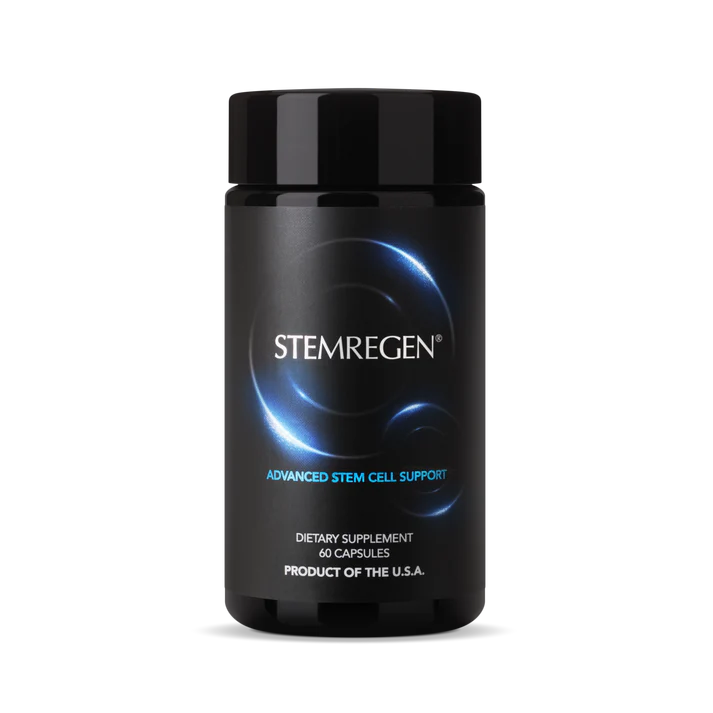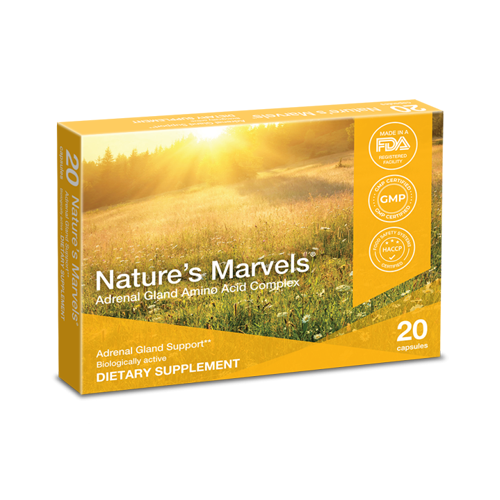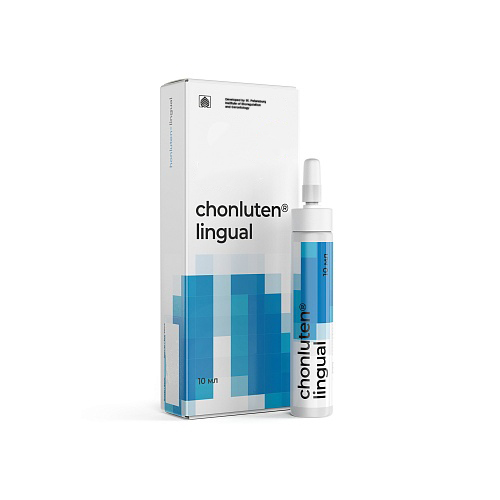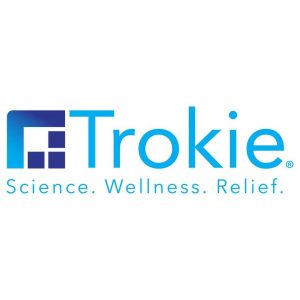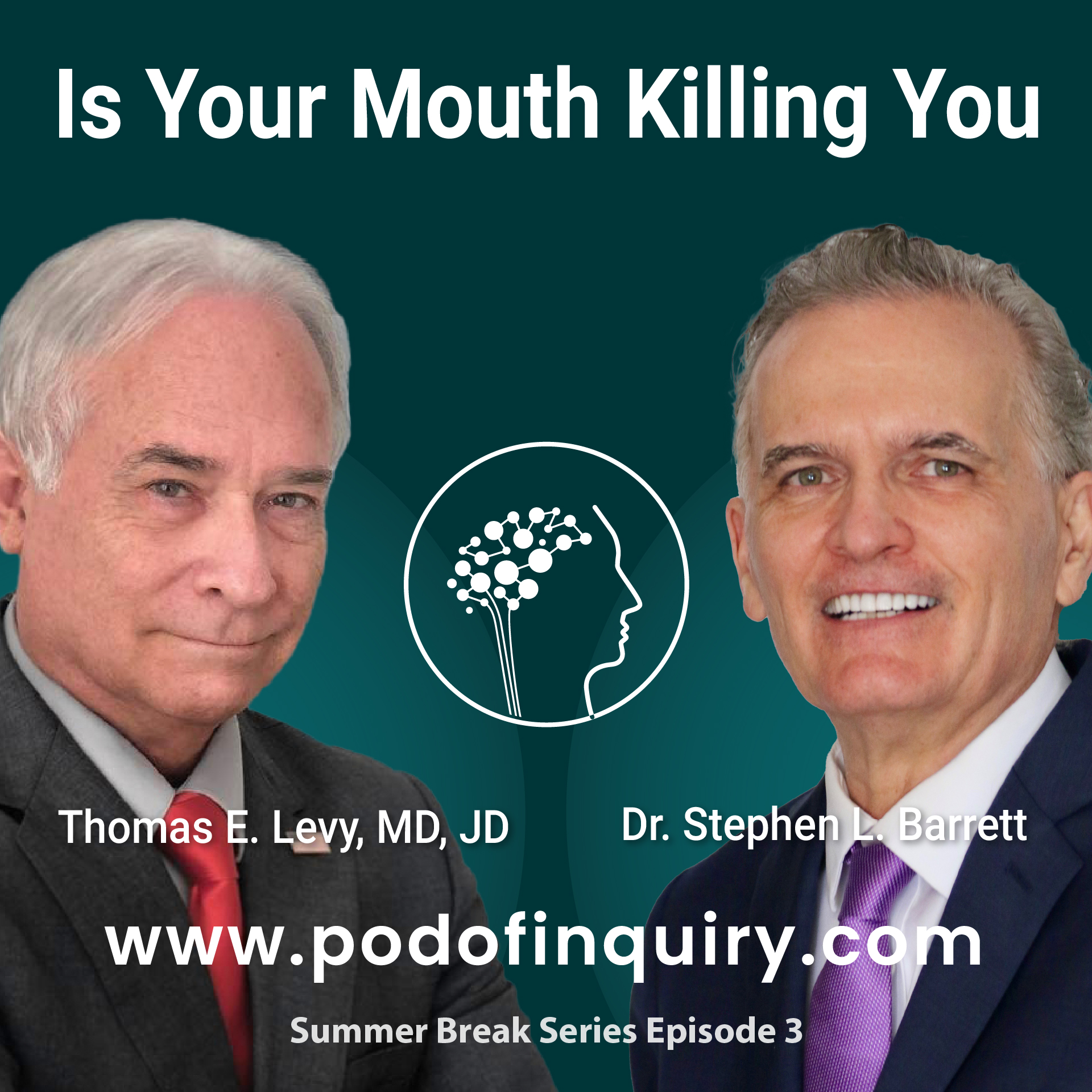In our latest episode, I sit down with Dr. John Cozzarelli, a brilliant podiatric surgeon who’s spent years unraveling the shocking truth about hyperuricemia. His research will completely change how you think about this “waste product.”
Dr. Cozzarelli breaks down the biochemical pathways in a way that’s both fascinating and terrifying. Using a creative “Wizard of Oz” framework, he reveals how uric acid isn’t just about gout – it’s a systemic inflammatory cascade affecting virtually every organ in your body.
In this episode you’ll discover:
• Why uric acid has been found in prostates, corneas, and even heart blockages
• The evolutionary reason humans lost the ability to process uric acid properly
• Simple dietary changes that can dramatically reduce your levels
• Why certain ethnicities need genetic testing before taking common gout medications
• How to interpret your uric acid test results (hint: “normal” ranges might be dangerously high)
If your doctor isn’t checking your uric acid levels annually, you need to ask why. As Dr. Cozzarelli puts it: “Is hyperuricemia really asymptomatic? You decide.”
This isn’t just another health podcast – it’s a wake-up call that could literally save your life
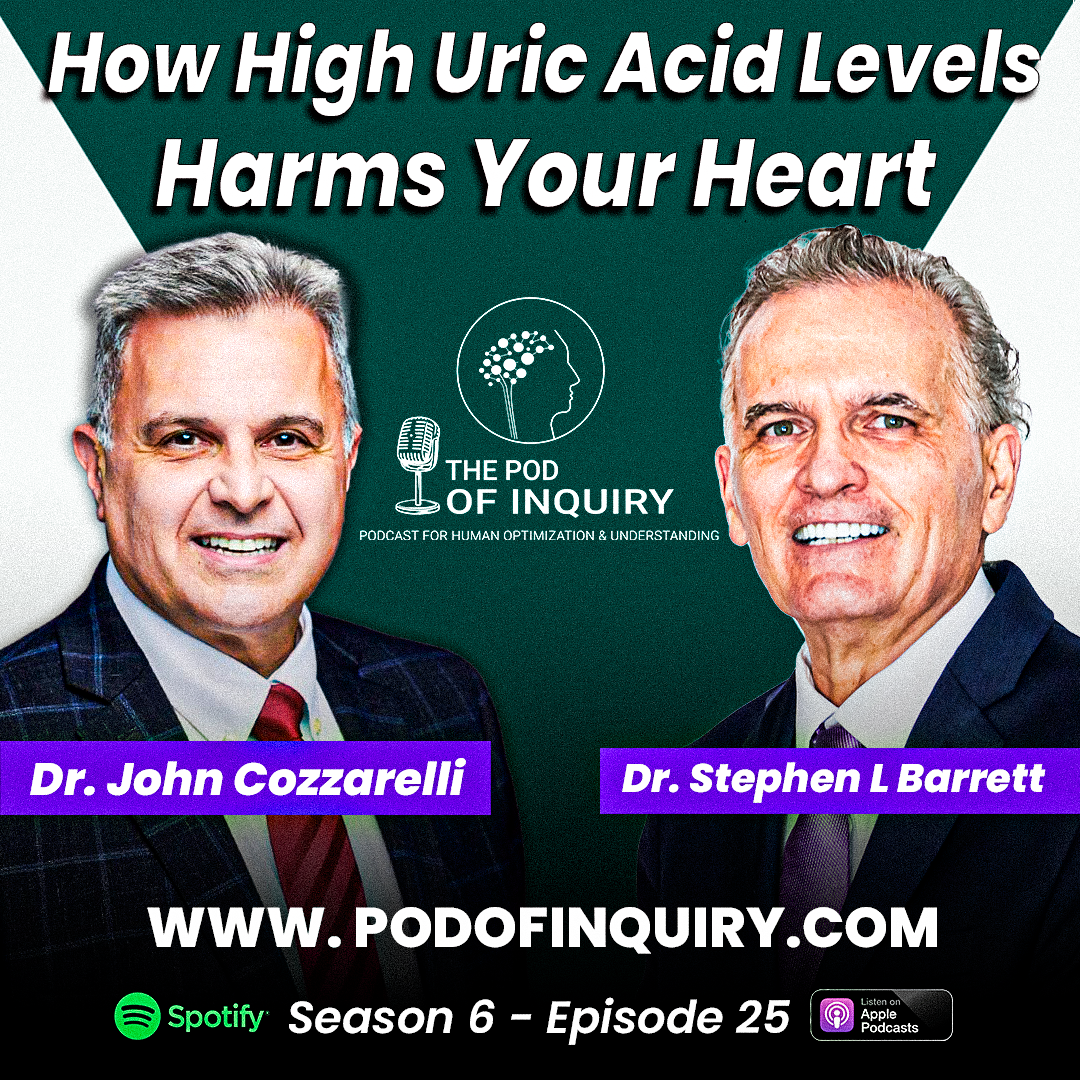
Watch The Podcast
Listen to The Podcast
Also available on
Guest Biography

Dr. John Cozzarelli
Dr. John Cozzarelli is a board-certified podiatric surgeon and nationally recognized expert in gout treatment and musculoskeletal ultrasound. He earned his Doctor of Podiatric Medicine degree from New York College of Podiatric Medicine in 1987 and completed his residency in Podiatric Medicine & Surgery in 1988.
Dr. Cozzarelli is the founder and CEO of Podiatry Associates of Belleville, which he established in 1992, and co-founded the Gout Institute of America in 2017. He also founded the Neurogenx Nerve Center in Belleville in 2016. Previously, he served as CEO of Essex Surgical Arts Surgery Center from 2005 to 2022.
A Diplomate of the American Board of Foot and Ankle Surgery and Fellow of the American College of Foot Surgeons, Dr. Cozzarelli holds medical licenses in New Jersey, New York, and Michigan. He is also a licensed pharmacist in New Jersey, bringing unique pharmaceutical expertise to his practice.
Dr. Cozzarelli has authored numerous peer-reviewed publications and a textbook on musculoskeletal ultrasound in the foot and ankle. He is a sought-after lecturer, having delivered hundreds of presentations on gout management and diagnostic ultrasound across the United States. His expertise in gout treatment has made him a frequent speaker for medical conferences and educational programs.
Recognized as a “Top Doctor” by NJ Monthly magazine for nine consecutive years (2008-2016) and selected as one of the top podiatrists in the United States by the American Consumer Research Council, Dr. Cozzarelli continues to advance the field of podiatric medicine through clinical practice, research, and education.
Show Notes from this episode
00:00-01:26 – Introduction
- Welcome and introduction of Dr. John Cozzarelli
- Discussion of hyperuricemia being much more than just gout
- Emphasis on metabolic effects of increased uric acid
- Recommendation to check uric acid levels even without gout symptoms
01:26-02:02 – Guest Introduction
- Dr. Cozzarelli’s background in New Jersey
- His presentation at recent Georgia state meeting
- Discussion of his unusual pathway into hyperuricemia research
02:02-03:37 – What Led to This Research
- Only 45-minute lecture on gout in medical school
- The more you learn about gout, the less you understand it
- Need to understand biochemical pathways and cellular level
- Reference to pioneers like David Perlmutter and Richard Johnson
- Historical context of gout as one of earliest metabolic diseases
03:37-05:00 – Historical Context
- Famous kings willing to give up treasuries to cure gout pain
- 1969 book “Pure White and Deadly” by Yudkin about sugar
- Etymology of “gout” from Latin “Guta” (dropping of bad blood)
- Ancient medicine’s four humors system
- Colchicine from crocus plant – over 2000 years old
05:00-07:20 – Beyond Gout: Systemic Effects
- Hyperuricemia affects much more than just joints
- Wide-ranging systemic health issues
- Importance of understanding metabolic pathways
- Introduction to presentation slides
07:20-08:17 – Asymptomatic Hyperuricemia Statistics
- 71 million Americans have asymptomatic hyperuricemia in 2024
- 1993: AMA removed uric acid from chem screen panel
- Only 20% of hyperuricemia patients develop gout
- Soluble vs. insoluble uric acid distinction
08:17-10:00 – New Metabolic Marker
- December 2024: Uric acid considered new metabolic marker for type 2 diabetes
- Every 1-point increase in uric acid increases metabolic syndrome risk
- Predictor for hypertension, obesity, CKD, NAFLD, type 2 diabetes
- 90% of gout is kidney-driven
- Salt intake pathway: vasopressin → aldol reductase → fructokinase → endogenous fructose → uric acid
10:00-12:00 – Comorbidities and Pathways
- Over 50% of gout patients have 3-4 comorbidities
- Hyperlipidemia connection through liver metabolism
- Kidney stones: traditionally 80% calcium oxalate, 20% uric acid
- New DECT imaging shows uric acid as nidus in stone centers
- Cardiac effects: uric acid level ≥9 increases arterial sclerosis by 15%
12:00-15:00 – The Wizard of Oz Analogy Begins
- “Follow the Yellow Brick Road” presentation format
- Dorothy character: multiple conditions linked to hyperuricemia
- Psoriasis connection: 30% develop gout due to increased cell turnover
- Polycythemia Vera: overproduction of RBCs increases uric acid
- Hyperparathyroidism decreases uric acid excretion
15:00-17:22 – Macular Degeneration Connection
- Age-related macular degeneration linked to inflammation
- Uric acid deposits in retinal pigment epithelium
- “Gout in the eye” – tophi can form in cornea
- Tophi definition: conversion of serum uric acid to monosodium urate
- Temperature effects: crystallization at 6.8°F at 98.6°F, but 4.5°F at 86°F
17:22-19:22 – Organ Transplant and Exercise
- Kidney/liver transplant: 50% increase in uric acid (cyclosporine)
- Cardiac transplant: 75% increase in uric acid
- Super-maximal exercise: ATP breakdown increases uric acid
- Seasonal patterns: spring/summer peaks due to dehydration
- Plastic bottles and BPA effects on post-menopausal women
22:40-25:00 – The Scarecrow Character
- Erectile dysfunction connection to uric acid
- 36% of ED patients have increased uric acid
- Uric acid depletes nitric oxide
- Testosterone therapy increases uric acid production
- Prostatitis: uric acid found in 50% of non-bacterial cases
25:00-27:50 – Smoking, Vaping, and Brain Effects
- Smoking cigarettes actually lowers uric acid (competes with free radicals)
- Vaping dangers: lead poisoning from lithium batteries, uranium in flavors
- Alkaline water recommendation from American College of Rheumatology
- Bing cherries provide 35% inflammation reduction
- Brain barrier: uric acid levels need to be stable for cognitive function
27:50-30:00 – Cardio-Rheumatology Fellowship
- New fellowship combining cardiology and rheumatology
- IVUS (intravascular ultrasound) can identify uric acid in cardiac blockages
- Stent failure if uric acid burden not addressed
- Tin Man character: cardiac conditions linked to hyperuricemia
30:00-32:24 – Cardiac and Renal Effects
- Uric acid levels ≥9 cut 10 years off life expectancy
- DECT imaging shows uric acid in cardiac tissue
- Inflammasome NLRP3 and interleukin-1β in heart and gout
- Kidney stones: 50/50 split with DECT imaging vs. traditional 80/20
- Gambling study: uric acid increases when playing for money
32:24-35:00 – Risk Factor Rankings
- Comprehensive list from highest to lowest risk factors:
- Hydrochlorothiazide (3.5 risk factor)
- Furosemide
- Hypertension
- Alcohol (malted beer > wine > hard liquor)
- Increased BMI
- High fructose corn syrup (1.8 risk factor)
- Fructose
- Seafood (1.5) – umami/glutamates
- Red meat (1.3)
- Low-dose aspirin
- Oatmeal (fortified iron disrupts GI reabsorption)
- Coffee (protective effect)
35:00-36:11 – Japanese Coffee Study
- 153,000 patients studied
- 4 cups coffee daily prevented soluble→insoluble uric acid conversion by 40%
- Japanese healthcare: 90% spending on prevention
- Methylxanthines in coffee vs. xanthine oxidase inhibitors
36:11-40:00 – The Cowardly Lion: Metabolic Syndrome
- Type 2 diabetes connection: insulin requires nitric oxide
- Sleep apnea: ATP degradation increases uric acid
- Every 1mg increase in uric acid = 30% increased metabolic syndrome risk
- High fructose corn syrup history: 1966 discovery, 1974 Nixon administration
- Average American consumes 16 teaspoons/day (60 pounds/year)
- Glucose vs. HFCS: 1 calorie to fat vs. 40 calories to fat per 120 calories
40:00-42:31 – Hypertension Study and Comparisons
- Richard Johnson study: 100 obese kids with high BP
- 50mg allopurinol normalized BP in 85% of participants
- Coke vs. Budweiser comparison: both 150 calories
- Coke: 90 calories go to liver, 25mg sodium added to prevent thirst quenching
- Weight gain projections from regular consumption
42:31-45:00 – Fructose vs. Ethanol
- Side-by-side comparison shows similar metabolic effects
- Dr. Lustig’s 2009 lecture referenced
- Sugary beverages = 1.6-2 years of brain aging per day
- Type 2 diabetes before 60 doubles dementia risk
- Drosophila fly study: high purine diet shortened lifespan by 48%
45:00-48:32 – Medications and Genetics
- Diuretics increase uric acid, SGLT2 inhibitors decrease it
- Metformin mechanism through AMPK pathway
- Wicked Witch character: tumor cell lysis, post-menopausal effects
- 14 different genetic alleles identified (SLC sequences)
- Uricase enzyme history: lost during Ice Age migration
48:32-50:00 – Evolutionary Perspective
- Primates had uricase enzyme, converted uric acid to allantoin
- Ice Age migration: Europe, seasonal figs, uricase gene loss
- Survival adaptation: store fructose as fat for winter
- Current uric acid levels 3-10x higher than ancestral levels
- Only Dalmatians can get gout among animals
50:00-51:40 – Genetic Testing Requirements
- HLA-B5801 allele in Han Chinese, Thai, Korean populations
- 80:1 incidence of Stevens-Johnson syndrome with allopurinol
- Mandatory blood test before allopurinol in Asian patients
- Lesch-Nyhan syndrome in “Winged Monkeys”
51:40-53:47 – Diagnosis and Treatment
- Fasting required for uric acid test
- Avoid soda and exercise before testing
- Ultrasound findings: hypoechoic clouds, snowstorm patterns
- Shear wave elastography for joint stiffness measurement
- Holistic treatments: quercetin, DHA, vitamin C, luteolin, chlorella
53:47-55:00 – Diet and Conclusions
- DASH diet study: 19,000 patients, 0.5-1.0 mg/dL reduction maximum
- Diet important for hyperuricemia, less effective for chronic gout
- Purine content charts: low, moderate, high foods
- Prevention vs. reactive medicine approach
55:00-59:31 – Q&A Discussion
- Importance of checking uric acid levels regularly
- Paradox of hypertension drugs increasing uric acid
- Handheld uric acid meters available ($30 for 50 tests)
- Case study: 85-year-old with gout flare at 4.5 uric acid level
- Temperature adjustments for crystallization calculations
59:31-1:01:08 – Temperature Effects and Closing
- Core temperature changes (98.6°F to 97.1°F)
- Crystallization calculations based on body temperature
- First MTP joint most affected (50-64% of cases)
- Orthopedic surgery protocols considering uric acid levels
- Simple explanation: hot vs. cold water with butter analogy
Sponsors Of The Episode
Approved Medical Solutions
Your source for Oxalate free Nitric Oxide Supplementation
Non-licensed patients can use code “sbarrett” for a 10% discount.
Licensed practitioners can access the discounts by registering and when at checkout put “podofinquiry” (no space and not case sensitive) in the coupon section.
Ketone
Nitric Oxide
How to Win Our Season 6 Giveaways?🎉🎁
1. Follow us on all social platforms (Facebook, Instagram, and LinkedIn)
2. Subscribe to our YouTube channel
3. Comment “Let’s Spelunk” on any Season 6 YouTube video to enter
YouTube: https://www.youtube.com/@podofinquiry
Facebook: https://www.facebook.com/podofinquiry/
Instagram: https://www.instagram.com/podofinquiry/
LinkedIn: https://www.linkedin.com/in/stephen-barrett-92776a51/


